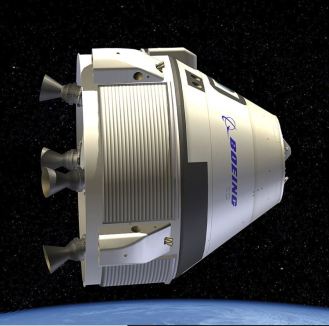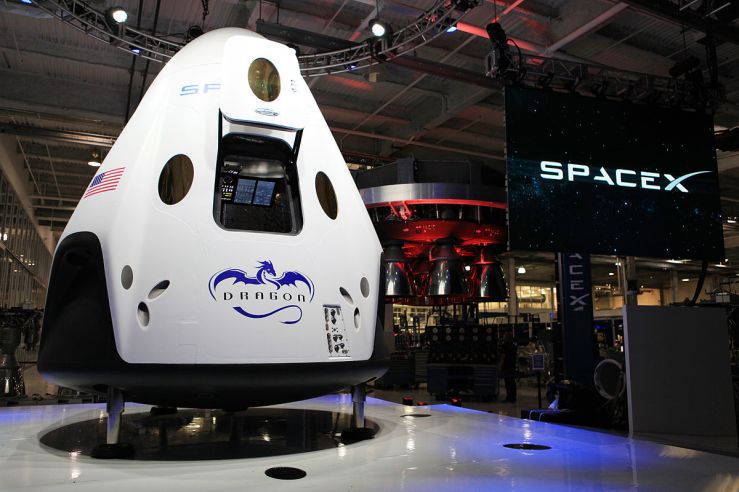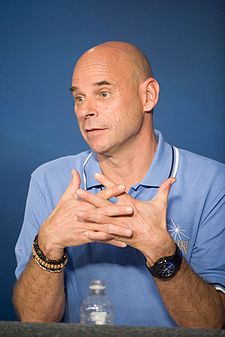Happy New Year! And happy new decade!
2020 could well be an important year for manned space flight. It might be the year that America finally puts humans back into space on American spacecraft. If this happens it will be on spacecraft designed and built by commercial companies rather than NASA.
.
The landing of Atlantis on 21 July 2011, which brought the Space Shuttle programme to a close – Image from NASA.
As readers of my blog will know, since the retirement of the Space Shuttle in July 2011, America no longer has the capacity to put astronauts into orbit around the Earth. Instead, it has been in the awkward situation of having to rely on the Russian Soyuz spacecraft to ferry astronauts to and from the International Space Station (ISS). This situation may change in 2020; later this year there are missions tentatively planned to take astronauts to the ISS on American spacecraft.
Interestingly, as a result of a change in space policy by the Obama administration ten years ago, and continued under Donald Trump, these missions will be in spacecraft designed and built by private companies, rather than NASA.
NASA makes a change of direction
The Boeing CT-100 Starliner Space Capsule – image from NASA. In 2020 this spacecraft may take astronauts to and from the ISS.
In a speech in 2010, US President Obama announced a major shift in the function of NASA in American human space flight:
‘By buying the services of space transportation — rather than the vehicles themselves — we can continue to ensure rigorous safety standards are met. But we will also accelerate the pace of innovations as companies — from young startups to established leaders — compete to design and build and launch new means of carrying people and materials out of our atmosphere. ….
Some have said, for instance, that this plan gives up our leadership in space by failing to produce plans within NASA to reach low Earth orbit, …. But we will actually reach space faster and more often under this new plan, in ways that will help us improve our technological capacity and lower our costs, which are both essential for the long-term sustainability of space flight.’
(White House press release 2010)
So, rather than build its own spacecraft to replace the Space Shuttle, NASA awarded grants to private companies to support research and development into human space flight. The program had several phases. In the first phase five companies were awarded grants to partially fund the research and development of the key technologies and capabilities that could ultimately be used in human space transportation systems. In the next phases, NASA awarded further grants to four companies to develop spacecraft that could send astronauts to the ISS.
.
After another selection process, in 2014 NASA made the final decision that the winners of the contracts for up to six crewed flights to transport astronauts to and from the ISS were as follows:
- Boeing – They were given a contract worth up to $4.2 billion, to transport astronauts on their CST-100 Starliner spacecraft.
- Space X – A company set up by Elon Musk, who among his many achievements is the founder of Tesla motors and the co-founder of Paypal. SpaceX were given a contract worth up to $2.6 billion to transport astronauts on their Dragon 2 spacecraft (pictured below).
For more details see NASA (2014).
The Dragon 2 Spacecraft – image from NASA
When the final decision was made it was anticipated that the winning companies would be able to launch manned missions to the ISS by 2017. This turned out be overoptimistic. There have been numerous delays in the development of both spacecraft and over the last few years the launch dates have kept slipping. For example, in 2019 there were the following mishaps.
- In April 2019, there was a setback when a Dragon 2 spacecraft was destroyed by an explosion caused by a faulty valve during an unmanned test
- In December 2019 the CST-100 was launched on an unmanned test flight, which was supposed to dock with the ISS. However, due to an error in the spacecraft’s clock, the engine fired at the wrong time. It was placed into an incorrect orbit and so was unable to dock with the station.
The testing of both spacecraft is still continuing. According to the NASA launch schedule (https://www.nasa.gov/launchschedule/), the next milestone will be a test that the Dragon 2 capsule can safely separate from its booster rocket in the event of an emergency. At the time of writing this post it is scheduled for ‘No Earlier than January 11 2020’.
If further tests are successful, and NASA are satisfied that the spacecraft are safe enough, at some time in 2020, the Dragon 2 spacecraft with Doug Hurley and Bob Behnken aboard will be the first American spacecraft to carry astronauts into orbit since the retirement of the Space Shuttle nine years ago. This is likely to be followed by the CST-100 a few months later.
.
NASA astronauts Doug Hurley and Bob Behnken who in 2020 are planned to become the first astronauts since July 2011 to go into orbit on a American spacecraft – image from NASA.
Opportunities for space tourism
The contract terms are that both companies will charge NASA around $60 million for each astronaut on a flight to the ISS. This is slightly cheaper than the amount it pays to the Russian space agency. The real boost is that rather than the money going to the Russian space agency, it will go to American companies, boosting American high technology industries and creating American jobs.
Once they have fulfilled their contractual commitments to NASA, both companies will be free to sell additional spare capacity to space tourists willing to spend around $60 million for a flight into orbit. Even at this extremely high price tag there would a high demand among the super-rich. In fact, between 2001 and 2009 seven individuals paid up to $40 million for a trip into orbit on a Soyuz rocket. After 2009 space tourism was halted because the Russians had no spare capacity.
The French Canadian Guy Laliberte, founder of Cirque du Soleil, paid $40 million for a 11 day trip into space in 2009. Image from NASA
Project Artemis
In March 2019 American Vice President Mike Pence surprised many people when he announced an extremely ambitious plan to put American astronauts on the Moon in 2024. This would be the last year in office for President Trump (assuming of course he wins this year’s election). NASA has named its new manned Moon programme Artemis, after Apollo’s sister in Greek mythology.
Its first mission would be a crew-less test of the Space Launch System, the powerful launcher currently in development. It is scheduled for late 2020, although many expect the launch to slip to 2021. The second flight in 2022 — the first with astronauts aboard — would orbit but not land, on the Moon.
On the third flight in 2024, astronauts would first travel to the lunar Gateway, a satellite which would be in or,bit around the Moon. From the lunar Gateway they would take another spacecraft to the Moon’s surface.
It will be interesting to see if these very ambitious timescales will be met.
I hope you have enjoyed this post. To find out more about Explaining Science, click on the Home link at the top of this page.
References
NASA (2014) NASA chooses American companies to transport U.S. astronauts to International Space Station, Available at: https://www.nasa.gov/press/2014/september/nasa-chooses-american-companies-to-transport-us-astronauts-to-international (Accessed: 1 January 2020).
The White House (2010) Remarks by the president on space exploration in the 21st century, Available at: https://www.nasa.gov/news/media/trans/obama_ksc_trans.html(Accessed: 1 January 2020).








I do hope 2020 is their year. 🙂
LikeLiked by 2 people
Hello Steve Hurley,
I concur with Widdershins. Thank you for wishing us “Happy New Year! And happy new decade!”, and for summarizing NASA’s recent events and new directions.
I would like to wish you a belated Merry Christmas and a very Happy New Year with my very special, animated post containing some upbeat and heartfelt messages to share with you at https://soundeagle.wordpress.com/2012/12/12/season-greetings-from-soundeagle-merry-christmas-happy-new-year-and-joyful-holiday/
If or when you try to access my main blog, please be informed that it will benefit from being viewed on a large screen of a desktop or laptop computer, since those lengthy multimedia posts and my blog could be too powerful and feature-rich for iPad, iPhone, tablet or other portable devices to handle properly or adequately.
May you enjoy a lovely weekend!
LikeLike
Thank you,
I think after Sunday’s success it looking fairly likely that SpaceX Dragon capsule with take astronauts to the ISS later this year.
LikeLiked by 1 person
You are very welcome, Steve. Cross our fingers for the astronauts having another safe and successful mission to ISS!
Here’s my post entitled “Cosmos in Perspective: Scaling the Universe with Interactive Infographics, Film, Animation and Slideshow” at https://soundeagle.wordpress.com/2013/12/15/cosmos-in-perspective-scaling-the-universe-with-interactive-infographics-film-animation-and-slideshow/
Please enjoy!
LikeLike
[…] Source link […]
LikeLike
Steve.
Thanks. Fascinating stuff as always.
Just curious: is NASA’s Doug Hurley a relative of yours?
LikeLiked by 2 people
Thanks Chris,
Sadly Doug Hurley is no relation !
LikeLiked by 2 people
Maybe Elizabeth Hurley?
LikeLiked by 2 people